This Russian nesting doll stained glass piece was made for someone who collects the real wooden ‘Matryoshka’ dolls. I bought the little Russian doll charm a while ago with a plan to make a glass piece to accompany it. To make 3D dolls that would stack inside one another from flat sheets of glass would take far too long, of course, so I chose to show them in different sizes next to each other.
Though I owned one of these dolls myself many years ago, I had never looked into their history, but now that I have I find it is fascinating.
Sometimes these icons of Russia are known as ‘Matryoshka’ dolls as the word literally means ‘little matron’. Often they are painted as Russian women in traditional scarves and aprons, the idea being that they are a maternal symbol of Russia itself, from which all the smaller ‘children’ emerge. Another interpretation is that they are a sign of rebirth and renewal, with each doll opening up to reveal a new, fresh version within.
First Russian nesting dolls
The nesting dolls I am talking about here were first exhibited to an international audience at the Paris World Exhibition in 1900. They were based on the tradition of nesting boxes and dolls that had been made for centuries before in China and Japan, but these new designs were created to represent mother Russia.
The original set was made in Moscow by a Russian artist called Sergei Maliutin, who worked with a lathe turner called V. Zveydochin. Maliutin painted the eight turned linden wood dolls himself, dressing the female ones in soft-toned traditional headscarves (known as babushkas) and aprons, and giving them symbols of Russian peasantry, like chickens and scythes, to carry. This first set of Russian nesting dolls is on display today in the Museum of Toys in Zagorsk.
Best wood for Russian nesting dolls
Linden wood is the preferred choice for creating the ingenious Russian nesting dolls, as it has a fine grain and is soft enough to work with without cracking. Once the wood is stripped it is cured, usually for between one and three years, before it is ready for turning on the lathe. A separate block of wood is used for the top and bottom of each doll, except for the smallest one in the set, which does not open, so only needs a single piece.
The earliest dolls were made in a place called Sergiev Posad, about 50 miles north-east of Moscow. They featured aspects of Russian culture and were decorated in earth tones, painted with gouache paint.
In 1912 the artists of Sergiev Posad created a set of dolls to honour the famous Russian author Nikolai Gogol. This departure from the traditional peasant woman inspired the evolution of the designs over the years to feature military leaders, cartoon characters and the other cultural symbols we know today. With many modern and traditional patterns, the Russian nesting doll remains an icon of the country that is enjoyed and collected around the world.
Popular style of Russian nesting doll
The image we have in our minds when we think of Russian nesting dolls today is usually of the bright red and yellow ones, depicted with free-painted flowers. This style of painting comes from the town of Semyonov, which lies 300 miles north-east of Moscow. The area is known for its Khokhloma painting, which is a traditional, freehand style. The style of Russian nesting doll decoration produced in this area is known as Red Roses. The Semyonov region doll shapes are created from birch, rather than linden, trees. The individualistic method of decoration ensures no two designs are the same.
This Semyonov style is the one I have recreated in my glass design – using the traditional red colour and free-style wire flowers and headscarf, plus my own hand-painted faces. Like the wooden ones, each glass doll is unique.
Above my dolls on their wooden mount, I added three stars of stained glass, to represent the Russian doll collector and her family.
She really appreciated her sculpture, which is a new take on the old idea. She said she was “Absolutely over the moon!” with the piece.
You can find out more about the history of Russian nesting dolls and see a picture of the first set made here.
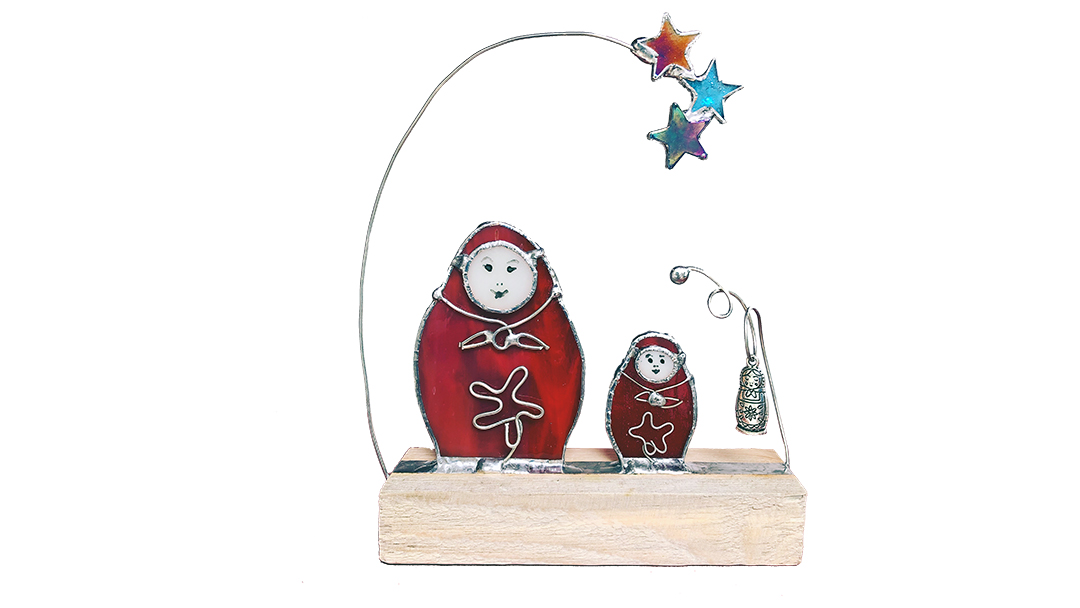
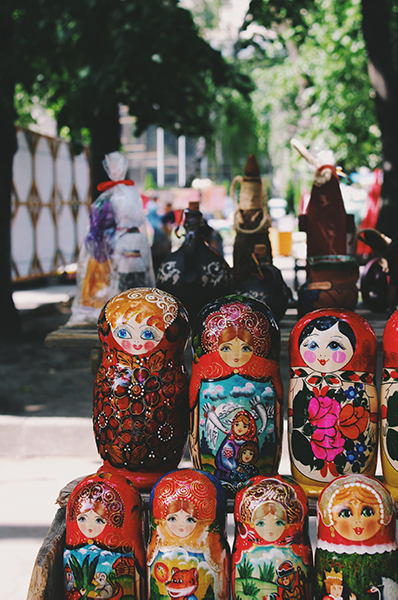





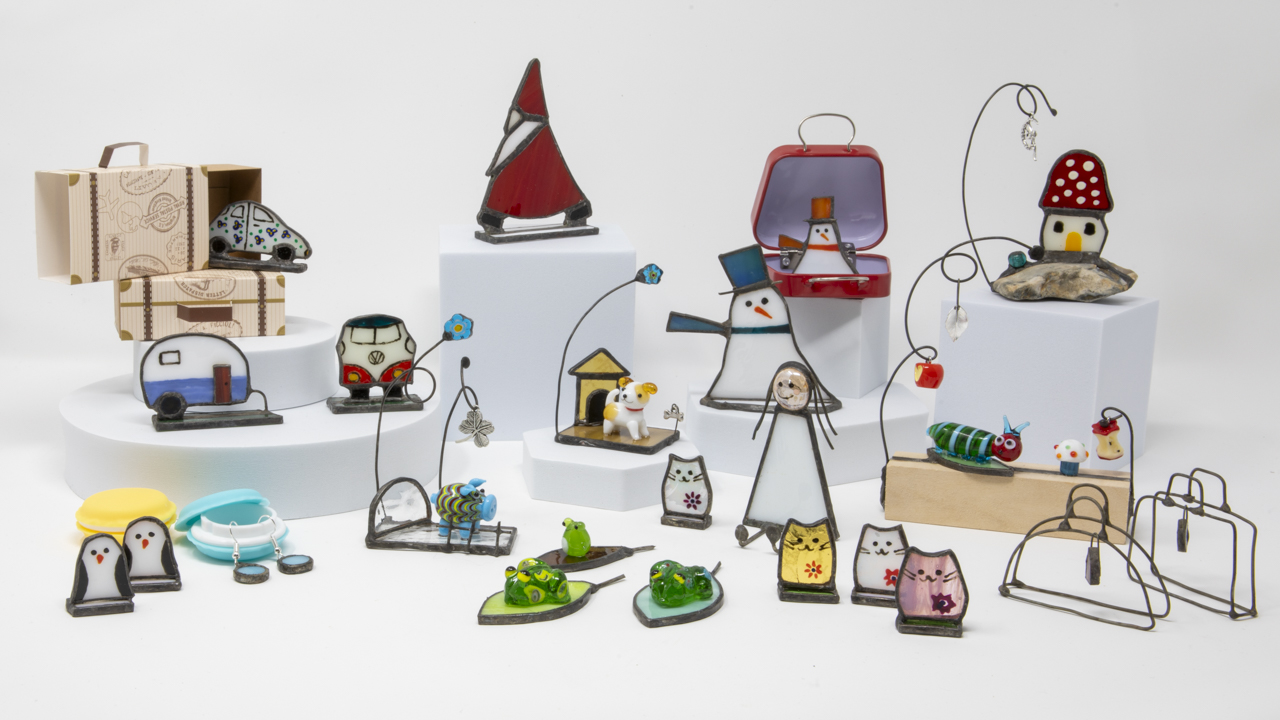
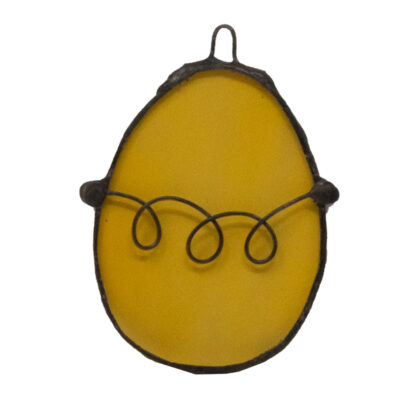

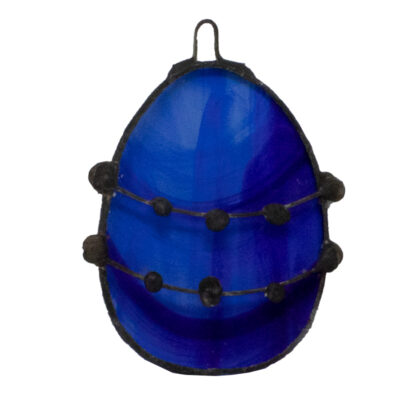
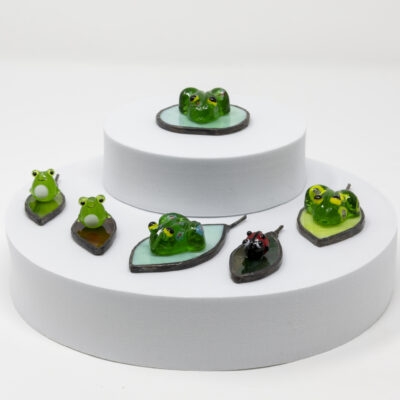
0 Comments